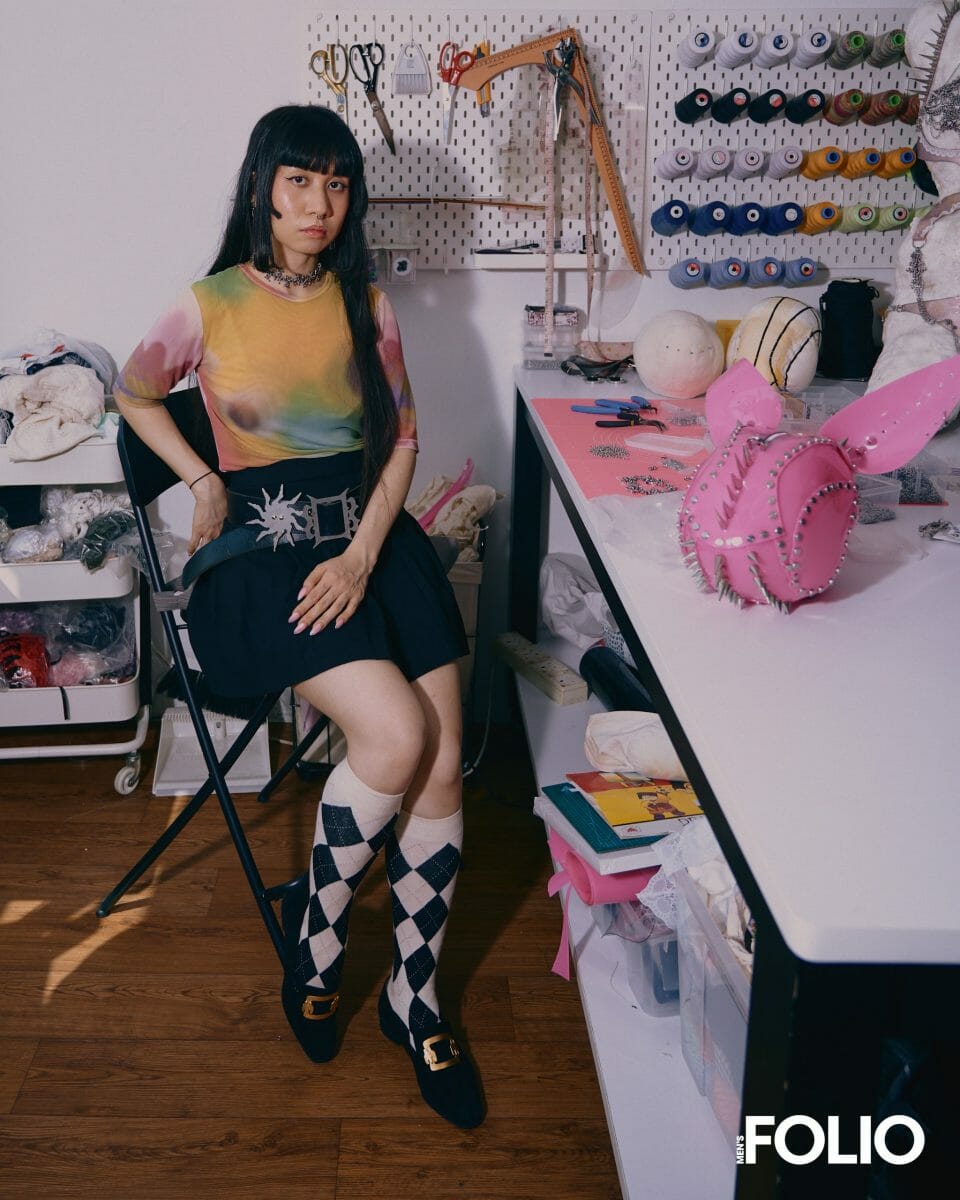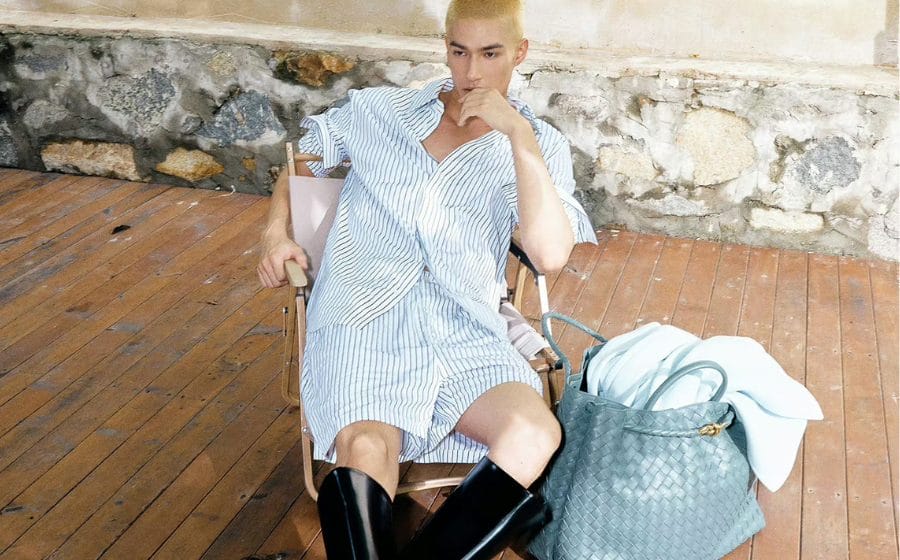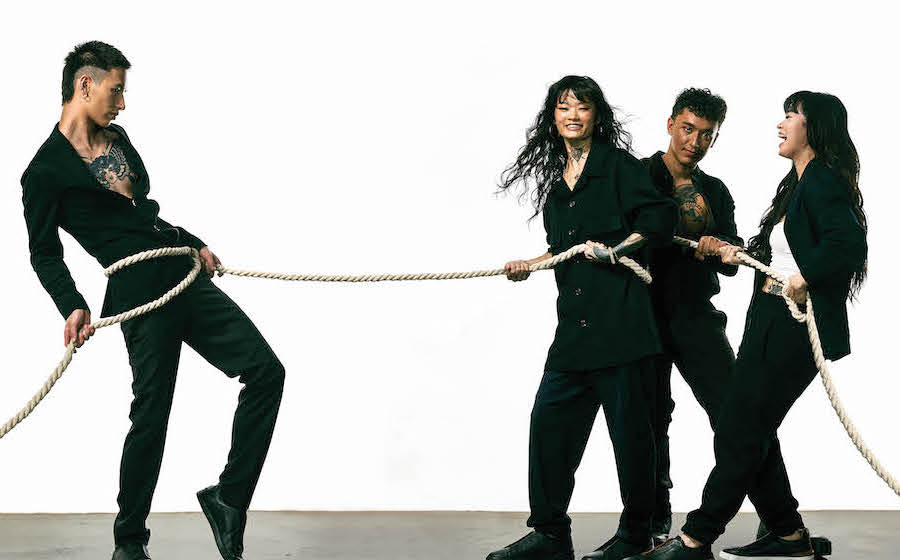
Rachel Cheong, founder of Closet Children, on how her jewellery protects individuality and celebrates the divine feminine energy we all have within.
Dressing is innately powerful. There is power in choosing how one wants to present themselves to the world everyday, and the language that wearable things communicate with has fast evolved to become more nuanced and subjective to interpretation today.
Perhaps the recent fashion weeks demonstrate how the places where clothes are made, the materials clothes are made of and when clothes are worn is just as (if not more important) then the designs they are made with. Clothes are innately social, an integral aspect of in-person interactions. But before they are even worn out of the house, they are first psychological — an expression of a person’s inner landscape, a reflection unto oneself. And more than clothes, is the hard statements we make about who we are to the world, through jewellery.
Here, Rachel Cheong, the founder of jewellery brand Closet Children, demonstrates just how jewellery can transform into armour, the traditionally dainty and fragile necklaces and bracelets a source of strength that is ugly, monstrous and protective of the feminine energies we harbour in our wake. What started out as a passion project from the midst of a global pandemic turned into a one-woman business, a source of self-reflection growth and a name that the subcultures in Singapore can confidently call their own.
Hi Rachel! What do you do for a living?
I do armour for a living. Yeah.
Why did you use the word armour to describe what you do?
I mostly use the technique called chainmail. So that was used in mediaeval armour back in the day. And also I feel that my jewellery and accessories styling very much have this like protective and fierce spirit to it and a lot of people to feel that way when they wear my stuff.
How did you first get into design? What was your first encounter with fashion like?
I always started out with drawings. When I was a kid, I would draw almost every day. That was like, the first thing I did when I went home. I didn’t do any other homework, I did art homework first. As I grew older, and I had a more like, specialised education, I became interested in doing more three dimensional stuff. So like bringing those drawings to life was more satisfying than just like, making it two dimensional. So I created a whole world around a persons body and that became my interest.
Did you ever foresee that it would become like a 3D thing?
I think it was Japanese street fashion. Because like, when you look at the people in the streets, they just, they just look like they’re in their own world. So I knew like cloths meant something more than just, just looking nice. Like, it’s, it projects your fantasies, like your identity into the people around you. And funnily enough, the design process for me, I don’t really start with drawings. I always stray from the drawings. In the end, I just work with what’s in front of me.
Even before fashion school, but when I started meddling with the three dimensional stuff, I realised that it’s easier for me to I start with what’s in front of me then, like a drawing, because by the drawing can fail because of gravity.
View this post on Instagram
So Closet Children started from a blog. What was this blog about and how did it become Closet Children?
The blog was just a space for me to post outfit pictures when I was a teenager. And there were a few bloggers at the time who were doing really cool stuff with photo booths. So they just had these like otherworldly backgrounds or like manga, anime backgrounds, and they were like positioning themselves with the outfit in the background. So it was also again, like, you know, positioning yourself in a whole new world. So I wanted to do that for myself. So this is why I started Closet Children, to also like network with these people. And my post inspirations from film, things I saw on tumblr.
Was it a Tumblr?
It was a Blogspot. But I also had a tumblr so you can just reblog an aesthetic, and then find your aesthetic during that time.
Then how did it get to like Closet Children now?
When I graduated from fashion school, I was thinking of a username for my work account. I felt like called the children was always, it always resonated because there was this like fantasy element. Just like merged together with what I was making, because I made these human dolls. That was from my graduation collection. It’s never about being realistic. I think that those two fused together was like from the past and the present.
View this post on Instagram
How is what you have done in fashion school different from what Closet Children is now?
Before it was more like art on the body. Now I’m making things a bit more practical. Just not so practical that it is for an everyday Singaporean.
After I graduated, I wanted to make another collection. But I had so many ideas that I became paralysed. And then the pandemic hit. So then I just decided to make masks like my mom asked me to. She had a friend who needed some so I just made some with the fabric that I already had so while trying to infuse that Closet Children vibe into the mask itself. That was the start of trying to make something wearable but still include my style in it. And then I just started thinking a little bit more practically about what people could wear. But you know, it’s not for a normal person. It’s for someone who wants something of statement. Like me.
So do you feel like there are people who are looking for this here in Singapore?
It’s interesting, because I’ve always tried to portray this feminine armour type of vibe. But people have been telling me that it’s quite unisex. And that people wear it to queer raves. I find that so interesting, because I’m asleep when you’re out. (laughs) So I won’t see anyone wearing it outside. But I guess it’s really for the people who don’t like fit into normal societal expectations, and they always want something more. So the jewellery is always more and even if they identify with a subculture, let’s say their goth but they’re like, “I’m not like other goths”. Then this is for them. For those who are a bit different.
View this post on Instagram
Your jewellery seems to be taken as a conduit of expression, especially for feminism or feminine values. How you do you think people nowadays are perceiving clothes and in general, the power of dress?
I think the rise of TikTok helps people see that they can dress in the vibe of an anime character or like a character they see on TV. I think that’s really nice, because that was what I used to do so many years ago, with that blog, and where I saw other people with their blogs doing this. People are getting more and more aware and acceptant that you can be a character in your life. You don’t have to dress like everyone else.
But at the same time in doing that, these people who could try to find it aesthetic and stick to it, and then brands will try to catch on that and commercialise plus capitalise on the aesthetic. So there’s like the good half where people are getting more self aware, but there are also the brands who are trying to capitalise on this.
What have been some of the biggest challenges or struggles while pursuing Closet Children?
Learning more business skills and not ignoring numbers. And this is something I am still working on. I think I did that for three years and then I was like “Oh, I’m in the red” so now I have to spend wisely. So yes, I am learning to adopt more marketing skills other than just posting on social media. Thinking about the value you create for your audience. It’s just pretty pictures. So I’m still trying to strategise that. Really to rely less on social media, since it used to work really well for me and a lot of young creators before Instagram changed their algorithm, and everything tanked.
But has thinking about numbers like this affected what you have done creatively for Closet Children?
So far no, because I still think that I could balance my interests with a business side. So I make things that make money and also make things that I am more passionate about making. It will just the backseat more often and take a little longer to develop because I’m focused on how to generate even more money to support that. So it’s very weird, because when you are being creative, you’re always following your intuition. But then when it comes to business, it is more about reason and looking at actual factual data. So you can’t just make decisions based on emotions — you might screw yourself up in the process.
View this post on Instagram
Through this whole process of setting up Closet Children and like everything you’ve been through with, what has been the most unexpected thing that you’ve learned about yourself as a creative person?
I guess in this years learning process of how to run a business profitably and sustainably. I also believed that I can do it like before I was like, Oh, I’m an artist. I don’t care about numbers. And then now it’s like, okay, I can be a business person also and be an artist at the same time. Like, both can coexist. It’s just a matter of understanding yourself a bit better and changing your mindset.
Lastly, what about protective armour and feminine empowerment has kept you inspired to create in your work?
I guess it was something I picked up via different interests. When I was a teenager I used to listen to Courtney Love a lot. And then I took that into university, along with what I studied during literature — the feminist rewriting of fairy tales. So that also was another strand I was influence by.
After I graduated, I had a shitty, abusive ex-boyfriend. Then I had this awakening that while feminine energies need protection, they can also be ugly and monstrous. So it is not always what patriarchy expects. It has slightly evolved over time, but this long-standing draw to these two concepts have all come through interests and personal experience.
View this post on Instagram
Once you’re done with this story, catch up with the rest of our September 2023 issue here.







